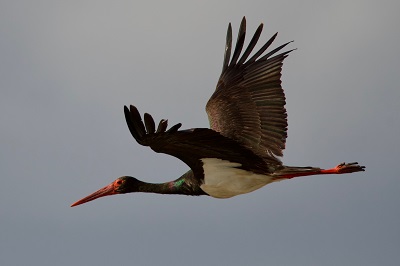The diversification of colour in the frontal areas of the Stork family evolved, facilitating species recognition, while the coloration of the rest of the body was conserved.
The Ciconiidae family includes 19 extant species distributed all over the world. While all species are similar in morphotype, with dominant black or white plumage colouration, storks may also display some highly coloured areas in small patches of the integument, including bill, legs, and the head. Non-conserved coloured areas are located in frontal zones but cover a low proportion of the entire body and are only visible at close range. These results provide further support to the species recognition hypothesis to explain colour patch allocation in closely related bird species with sympatric distributions.
Juan José Negro, scientist at the Doñana Biological Station (CSIC), and Eduardo Rodríguez-Rodríguez, collaborator at the University of Seville have carried out a study published in the Birds journal, where they tested the conservatism of colour characters in different parts of the body, aiming at detecting highly and lowly conserved characters. Using a newly method, which was not used in animal coloration studies before, the authors detected that only 12% of the total body area presents the majority of divergence in colour within Ciconiidae. The frontal areas, where many storks have bare parts, tend to concentrate lower conservatism and sometimes this exposed skin is coloured, either by melanin, carotenoids, or by the haemoglobin in circulating blood through skin vessels.
Authors argue that the coloration of the rest of the body, as storks have no major predators, has not been subjected to selective pressures towards camouflage patterns, being the conserved characters (that is, dark plumages due to melanins or feathers without white pigmention) common in all species. By concentrating the bright colours in frontal areas visible at close range, storks are probably able to recognize individuals of their same species in order to avoid maladaptive hybridization or join mixed-species flocks in foraging or resting areas.
Reference
Eduardo Rodríguez-Rodríguez, Juan J. Negro. Integumentary Colour Allocation in the Stork Family (Ciconiidae) Reveals Short-Range Visual Cues for Species Recognition. Birds 2021, 2(1), 138-146; https://doi.org/10.3390/birds2010010
https://www.mdpi.com/2673-6004/2/1/10/htm








 Un estudio analiza la distribución de los mosquitos transmisores de la malaria en España
Un estudio analiza la distribución de los mosquitos transmisores de la malaria en España


